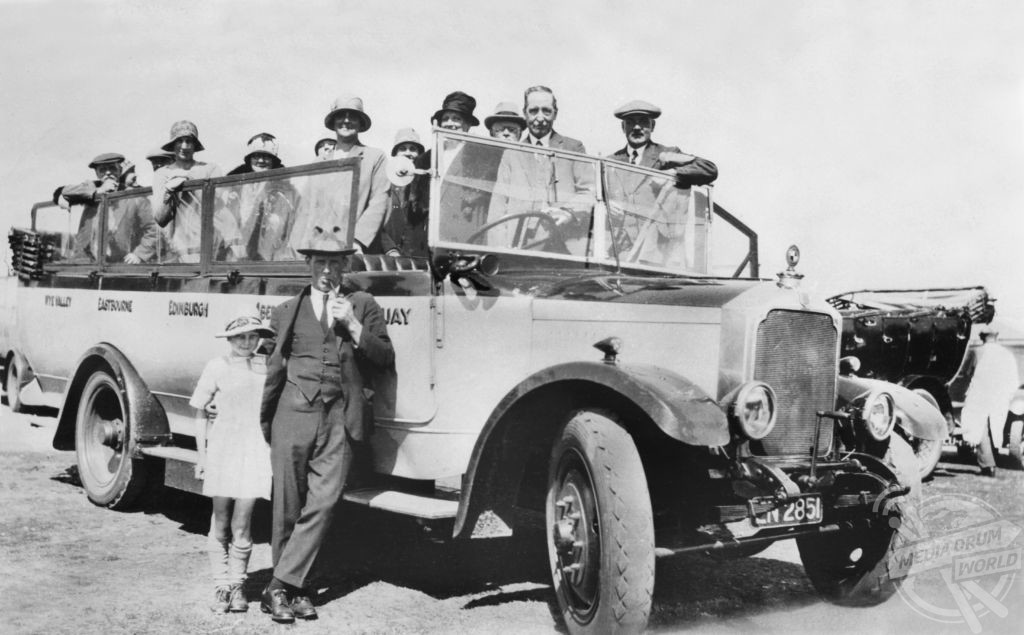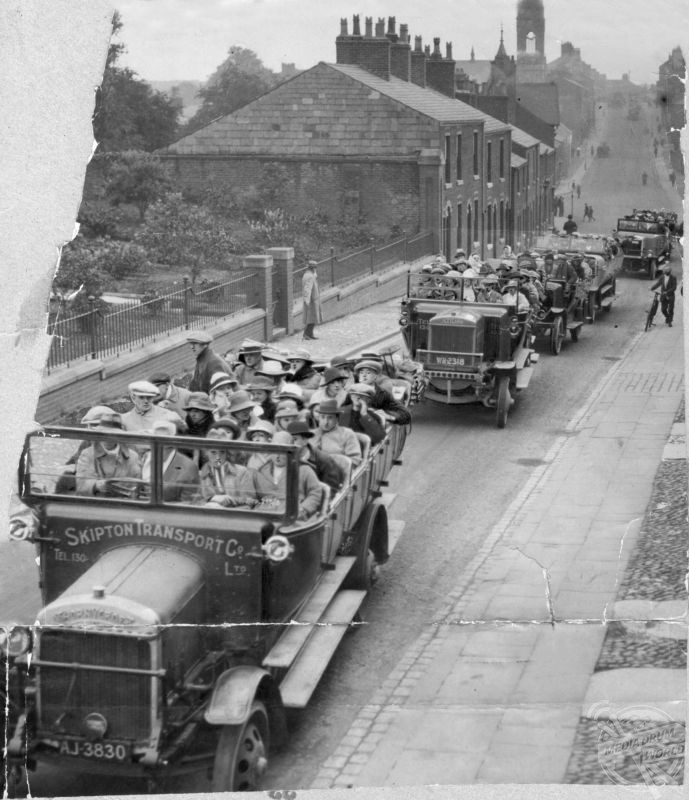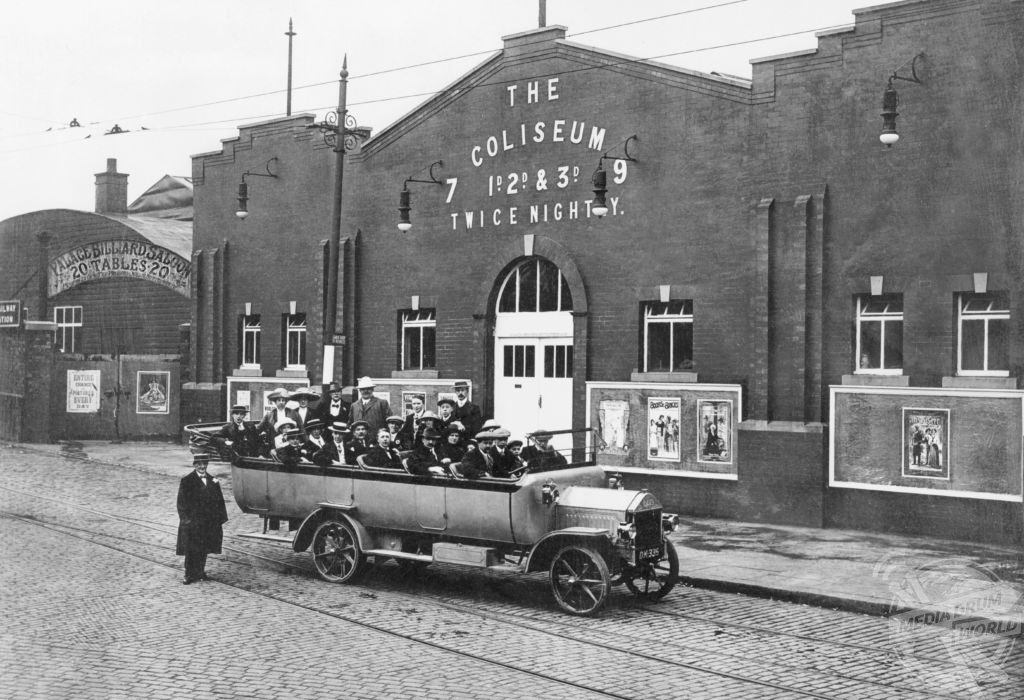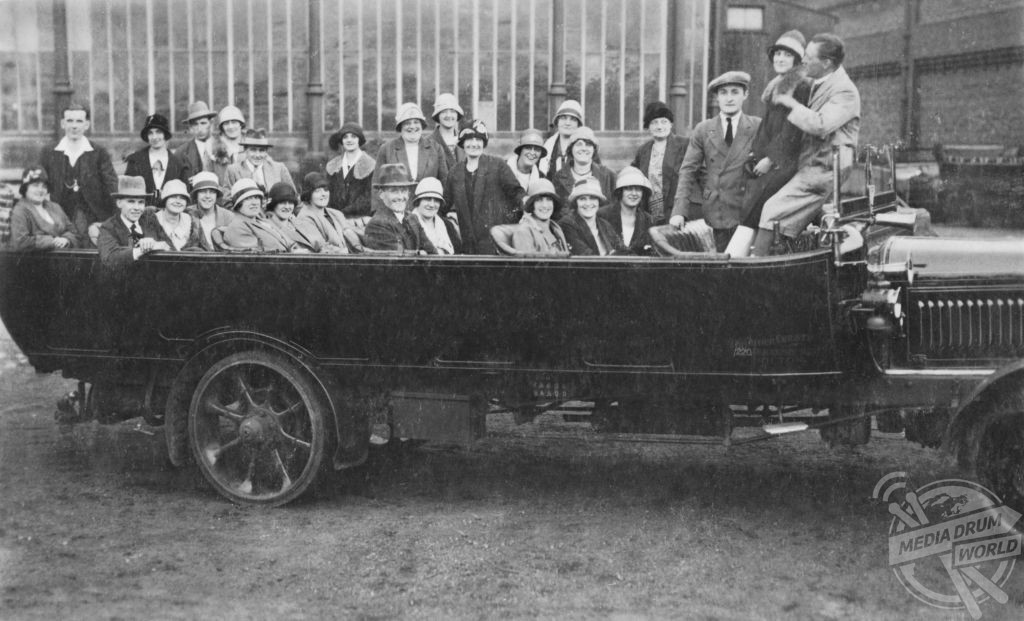By Mark McConville
STUNNING pictures from the pre-package holiday era have revealed the large and sometimes dangerous open-top car favoured by frugal British tourists in the 1920s as tens of people could enjoy a daytrip in one vehicle.

The incredible images, as revealed by the website Retronaut, show smartly dressed people, some of which were friends and family but others who will have been complete strangers squashed together, posing the back of a variety of charabanc cars including one called ‘The Lily’.
Other striking snaps show a charabanc driving down the road alongside normal cars and a boy on a bicycle, a long queue of people waiting to get on and a convoy of charabancs travelling down the street.

The original char-à-banc, literally “car with benches” was a French vehicle used for sporting outings from the 1840s. It had front-facing bench seats and was drawn by two or four horses.
The motor charabanc arrived with the invention of the internal combustion engine. They had the same forward facing bench seats and had open tops with large canvas hoods that could be pulled over in the event of rain. The hoods were very heavy and male passengers had to help the driver to pull them across.

The charabanc body was often built separately to the motor chassis. It could be replaced by a goods carrying body in the winter, to keep the vehicle in use.
Charabanc use began to decline after the 1920s. They continued to be used in the mill towns of the north of England for factory outings.
The workers were poor in the 1940s and 1950s, the recovery from WWII was slow. Annual holidays had not yet become established and a works day out in a charabanc was all that could be afforded.

Charabancs were noisy and uncomfortable, with low backed hard seats and only suitable for short day trips.
They were also dangerous as the high centre of gravity when fully loaded (or overloaded) made them liable to overturning. There was no protection for passengers if they did and fatalities occurred.
Increasing prosperity and holiday entitlement giving families the opportunity to take separate holidays rather than group days out rendered charabancs obsolete.







